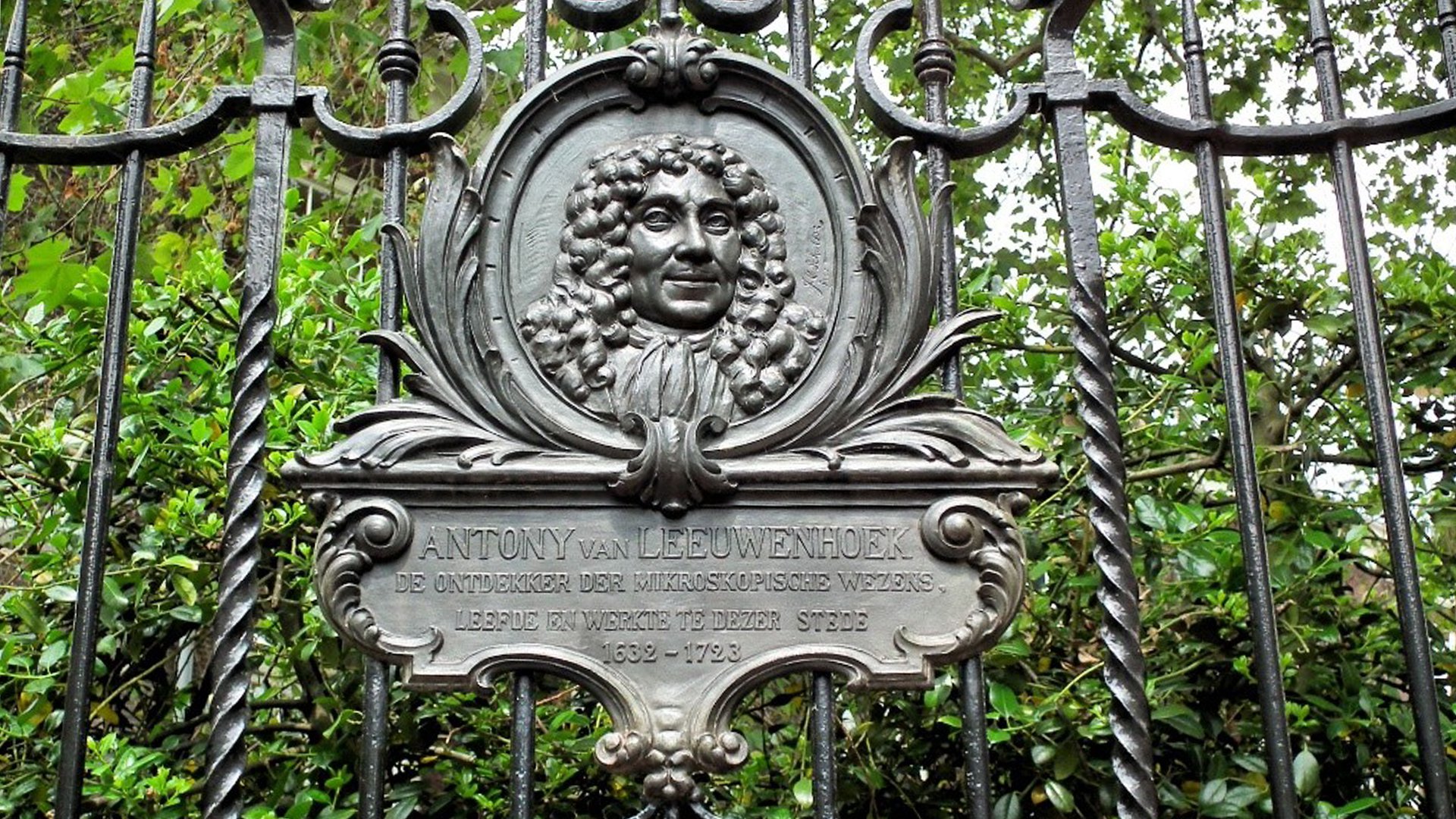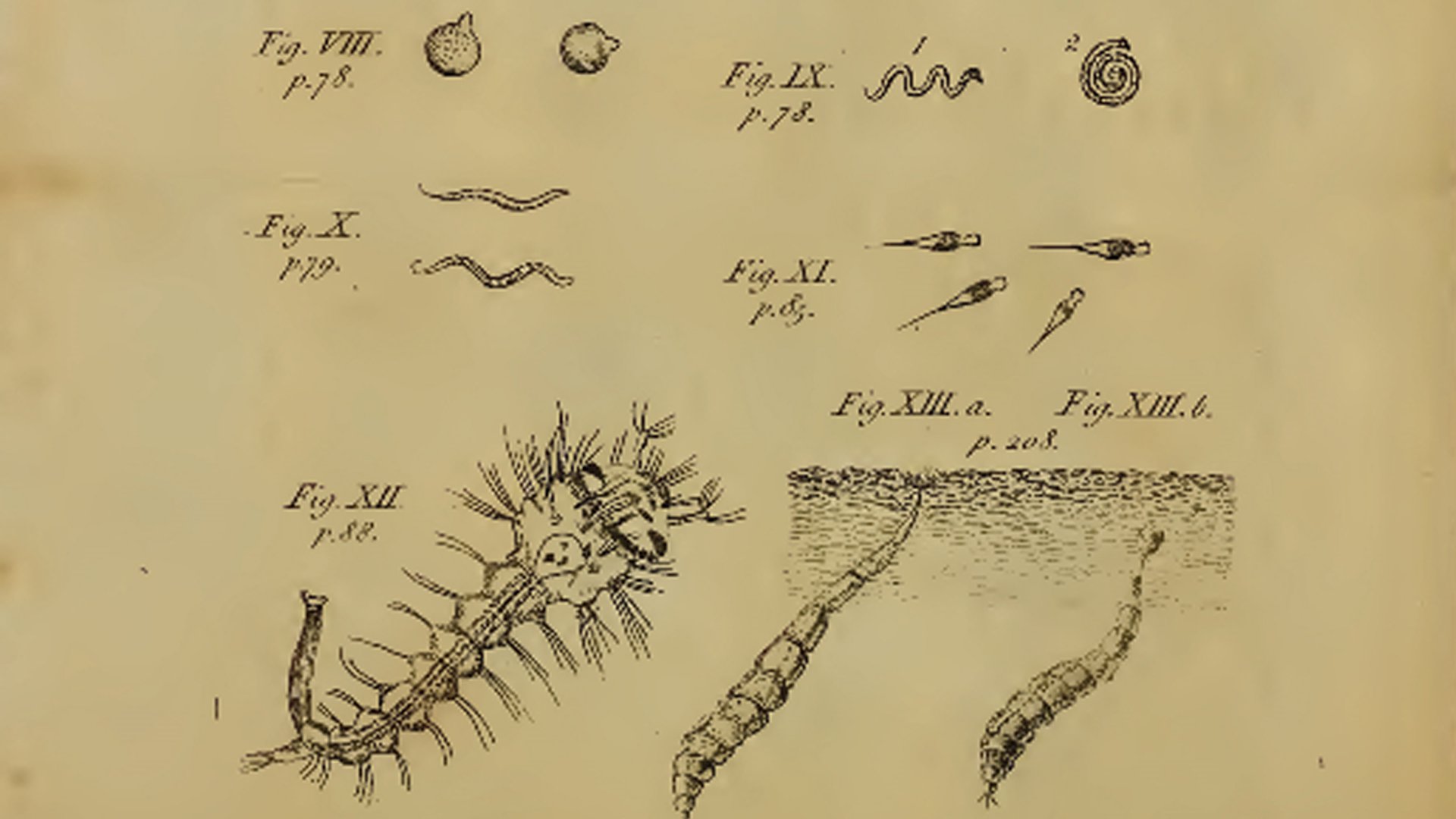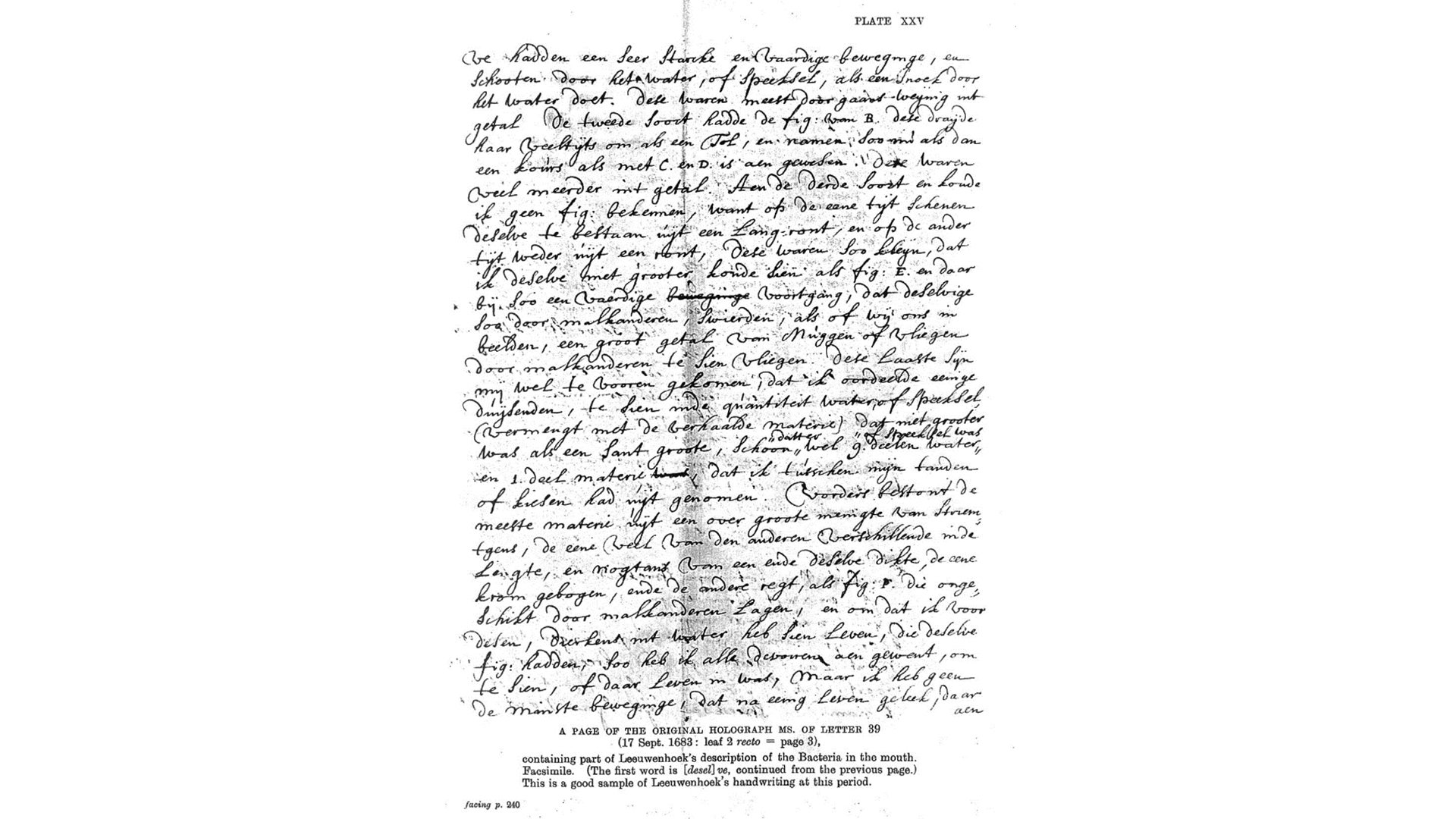*Linceus is a figure from Greek mythology known for his keen eyesight.
Draper from Delft
Antoni van Leeuwenhoek (1632 – 1723) was a cloth merchant from Delft, the Netherlands. He was not a scientist, but he had a great interest in the sciences. In 1664, the book Micrographia of the British scientist Robert Hooke was published. This was a world first: nobody had ever published such detailed drawings of small animals, such as fleas and ants. Van Leeuwenhoek already used lenses by then to carefully check his fabrics, but it is plausible that Micrographia inspired him to aim his lenses at different matters. In ditches he saw, as the first person ever, that the water is full of “animalcules”: microbes. Van Leeuwenhoek had learned himself how to make lenses and developed a kind of microscope. The quality of these microscopes was not matched by any other person for decades.

Daring discoverer
Van Leeuwenhoek had an unstoppable interest in the micro-world. During his long life, he put all kinds of things ‘under’ his microscope. Interestingly, the things he saw never frightened him. In pond water and in dental plaque, he discovered small “animalcules”, that were renamed bacteria later on. Also red blood cells, the striped pattern on muscle tissue, connections between blood vessels and the facet eye of an insect were first seen and described by Van Leeuwenhoek. When he put sperm under his microscope, he saw that even that looked like moving “animals”. He concluded that male sperm is the bearer of life, and the female cell is needed as a food source for these life bearers. By now, we know better of course.

Famous Dutchman
It is quite special that the discoveries of a draper from Delft became world famous. Several factors contributed to Van Leeuwenhoeks success. Firstly, it was the right time. Van Leeuwenhoek lived during the Age of Enlightenment, so scientific discoveries were received well. Secondly, Van Leeuwenhoek was a very skilled lens maker. This resulted in a knowledge monopoly in the area of microscopy. Thirdly, Van Leeuwenhoek was a good observer and drawer. He described his findings in great detail and clarified them with precise drawings. Lastly, advised by a friend, Van Leeuwenhoek wrote letters to the scientists of the Royal Society in London. This gave him and his discoveries world wide fame.
Van Leeuwenhoeks letters to the Royal Society are preserved and digitalized. Click here for the original text of all letters, including explanation and English translation. In Letter 11 (8 september 1674), he writes about “animalcules” for the first time.

Van Leeuwenhoeks microscope
Van Leeuwenhoeks microscope does not quite resemble modern microscopes. It is only a few centimetres in size, and must be held in front of your eye, just like a magnifying glass. The apparatus consists of two thin sheets of metal with a small hole in it. The lens is put in that hole, pinched between both sheets of metal. An object can be placed on a small pin. With small screws, one can put the object exactly in the right place in front of the lens. Van Leeuwenhoek made hundreds of these microscopes. The best ones could magnify more than two hundred times. An unprecedented performance in that time. In Micropia, you can see a replica of Van Leeuwenhoeks microscope.
A new world
With his observation of “animalcules”, Van Leeuwenhoek discovered a new world. A world of organisms much smaller than our eyes can observe. A world of microbes that compensate their size with their abundance. In an era that was dominated by the idea of generatio spontanea, the belief that life can form out of non-living matter, Van Leeuwenhoek proved the contrary. His discoveries started a whole new research field: microbiology. Without microbiology, our world would look quite different. No vaccines, no antibiotics, no fermented drinks, no bioplastic. And no Micropia. We opened our doors exactly 340 years after Van Leeuwenhoeks discovery, to show everyone this fascinating microworld.
|
Translated to modern English from: Op de Brieven van den heere Antoni van Leeuwenhoek, Lidt der Koningklyke Societeit te Londen van H.K. Poot, uit de bundel Mengeldichten (1716-1722) |
